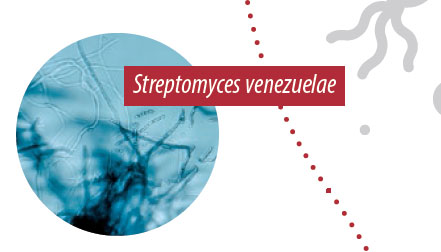Content available at: Español (Spanish)
The discovery of Chloramphenicol residues in a game bird farm allows us to highlight important differences in the information consumers receive about the risks of taking antibiotics with food.
Ever since Chloramphenicol residues were found by health authorities in feed samples of a game bird farm in Northern Italy, investigations have been launched to figure out the causes that may be at the root of this problem, as well as to make reflections regarding the information and the perception that the consumer has in general about the presence of antibiotics in foods of animal origin.

For some years now, several European countries have reported the presence of Chloramphenicol in plant and animal based foods.
Chloramphenicol and other substances with antimicrobial activity that are used or have been used in medical and veterinary therapies, have been selected from molecules naturally produced by bacteria that live in the environment, particularly in the subsoil, such is the case of Streptomyces venezuelae, a bacterium capable of producing significant amounts of Chloramphenicol.
In 2015, at the University of Wageningen (NL), it was demonstrated that wheat and corn have the ability to absorb Chloramphenicol present in the subsoil, produced by Streptomyces venezuelae.
In 2014, the EU Directorate General for Health (DG-SANCO) commissioned the European Food Safety Agency (EFSA) to assess the risk of absorption of Chloramphenicol with food (including vegetables) for people and animals.
Consumers must be properly informed about all the benefits and risks present in each type of food, be it of plant or animal origin. Nowadays, they often receive information that lacks scientific rigor, sometimes influenced by ideologies against the consumption of foods of animal origin.
In 2016, the Health Authorities carried out feed samples, in the silo and the feeder, from a game bird farm (with adult partridges and pheasants) in Northern Italy, as part of a national sampling program in meat production poultry.
After having found the presence of a low Chloramphenicol residue (4.51 μg / Kg and 1.63 μg / Kg), only in the feed mixed with cereal grains present in the feeders of the pheasant and partridge houses (the feed contained in the silos was negative), the Authorities returned several times to the farm to take other samples of feed, poultry meat, water and cereals.
In total, the Health Authorities carried out 52 additional samplings, searching for 266 antibiotic molecules without finding any type of residue in them. The animals remained in good health throughout the sampling time (three months), with a mortality rate of less than 2%. The farmer was charged with public health antecedents (for this reason, the Italian Penal Code provides for imprisonment from 3 to 9 years).
Chloramphenicol is a broad spectrum antibiotic that has been used in slaughter animals in the past. In the 62nd Joint FAO / WHO Expert Committee on Food Additives (JECFA), Chloramphenicol has been classified as a substance with presumed carcinogenicity to humans and, due to its correlation with cases of aplastic anemia, in the European Union (EU Reg. 37/2010), it has been decided to prohibit its use in animal husbandry.
Keep up to date with our newsletters
Receive the magazine for free in digital version
REGISTRATION
ACCESS
YOUR ACCOUNT
LOGIN
Lost your password?










